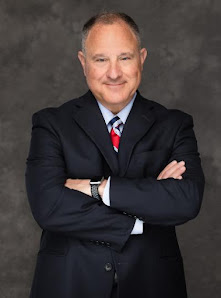CREATORS
August 12, 2025
For decades, eyewitness identification was considered the
gold standard when it came to evidence used to gain a conviction.
In the famous courtroom drama "12 Angry Men,"
rated by the American Bar Association as one of the 25 greatest legal movies of
all time, juror No. 8, played by Henry Fonda, earnestly advocated for a
not-guilty verdict.
Fonda started out as the only not-guilty vote. The turning
point of the deliberations occurred when an older juror recalled that the
state's prized eyewitness, who had observed the murder through her window as
she lay in bed, had red marks on her nose left from wearing eyeglasses. The
older juror asked a reserved, bespectacled juror, "Do you wear your
glasses when you go to bed?" The bespectacled juror responded, "No, I
don't. No one wears eyeglasses to bed."
Eyewitness identification can be convincing, but is it
reliable?
More than 75,000 prosecutions every year are based entirely
on eyewitness identification. Some of those identifications are erroneous.
Advances in the social sciences and technology have cast a new light on
eyewitness identification.
Hundreds of studies on eyewitness identification have been
published in professional and academic journals. One study by University of
Virginia Law School professor Brandon L. Garrett found that eyewitness
misidentifications contributed to wrongful convictions in 76% of the cases
overturned by DNA evidence.
U.S. Supreme Court Justice Sonia Sotomayor has acknowledged
the shortcomings of eyewitness testimony. She wrote, "eyewitness
identifications' unique confluence of features - their unreliability,
susceptibility to suggestion, powerful impact on the jury, and resistance to
the ordinary tests of the adversarial process — can undermine the fairness of a
trial."
What can cause an eyewitness to misidentify a suspect? There
are a number of factors: Poor lighting, the crime occurred quickly, the
presence of a gun and the fact that the perpetrator is a different race than
the witness. The police can, as well, intentionally or unintentionally
influence an eyewitness's identification.
There are four basic rules proposed by researchers to help
promote valid police identifications, including: Who conducts the lineup;
instructions on viewing the lineup; the structure of the lineup or array; and
immediately obtaining a confidence statement for the eyewitness.
When it comes to the "who," research supports
double-blind lineups administered by a police officer who is not familiar with
the suspect and who is not one of the primary investigators on the case. The
instructions are equally important. For instance, a photo array should be
presented sequentially rather than as a group without comment by the officer
displaying the array. Research studies have revealed that both practices
decrease the pressure on witnesses to pick someone and guard against undue
influence.
The structure of the lineup is another area where bias can
seep into the process. If the eyewitness described the suspect as a white male
with long hair, approximately 6 feet, 4 inches tall, with a thin build, it
would not be fair to have the suspect and four short, overweight, bald men in a
lineup.
Finally, a confidence statement taken from the witness
immediately after the array or lineup will provide the police, the suspect and
ultimately jurors with a clear understanding of just how sure — or confident —
the eyewitness is in her identification of the suspect.
Former U.S. Supreme Court Justice William J. Brennan Jr.
wrote in a dissenting opinion nearly 35 years ago, "There is almost
nothing more convincing than a live human being who takes the stand, points a
finger at the defendant, and says, 'That's the one!'"
No one can challenge the impact of eyewitness
identification. However, it is clear from the research and the growing number
of exonerations that the reliability of eyewitness identification falls far
below its impact. Without meaningful reform, the threat of convicting the
innocent continues.
Matthew T. Mangino is of counsel with Luxenberg, Garbett,
Kelly & George P.C. His book The Executioner's Toll, 2010 was released by
McFarland Publishing. You can reach him at www.mattmangino.com and follow him
on Twitter @MatthewTMangino
To visit Creators CLICK HERE








No comments:
Post a Comment